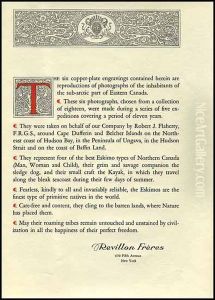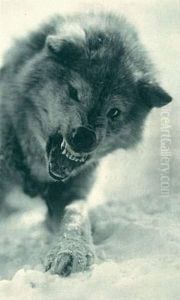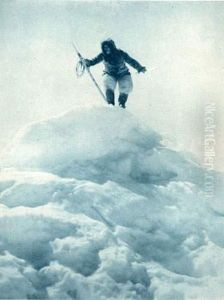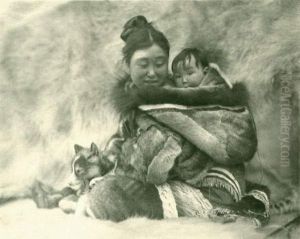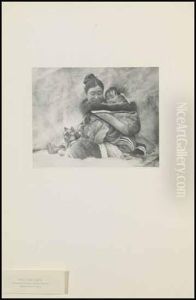Robert Joseph Flaherty Paintings
Robert Joseph Flaherty, born on February 16, 1884, in Iron Mountain, Michigan, was an American filmmaker who is often regarded as the 'Father of Documentary Film.' His work is characterized by his empathetic portrayal of the lives of people living in harmony with nature, and he is best known for his pioneering work on the 1922 film 'Nanook of the North.'
Flaherty's early years were influenced by his father's work as a prospector, which led to Robert's own interest in exploration. This interest was instrumental in his development as a documentary filmmaker. He did not receive formal training in film but developed his skills through practical experience. His first major project began in 1913 when he started filming the Inuit people of the Canadian Arctic for the Sir William Mackenzie’s railway company, though his initial footage was lost in a fire, an event that taught him the importance of having a compelling narrative structure in documentary filmmaking.
Undeterred, Flaherty returned to the Arctic and, over a period of more than a year, filmed the Inuit again, focusing on the daily life and struggles of one particular family led by the charismatic Nanook. The resulting film, 'Nanook of the North' (1922), was a commercial success and is considered a milestone in the history of documentary cinema. Although some aspects of the film were staged, it was groundbreaking for its use of actual people and settings for its story.
Following the success of 'Nanook,' Flaherty continued to make films that documented the lives of people in remote locations. His subsequent works included 'Moana' (1926), set in Samoa, which was among the first films to be made in the South Seas, and 'Man of Aran' (1934), which depicted the harsh existence of inhabitants of the Aran Islands off the west coast of Ireland. Flaherty’s last major work was 'Louisiana Story' (1948), which was sponsored by Standard Oil Company and told the story of a young Cajun boy's life in the Louisiana bayous.
Flaherty was not only a filmmaker but also a gifted photographer and writer. His approach to documentary emphasized the visual and dramatic aspects of his subjects rather than the factual or educational content, which led to some criticism but also set a standard for future generations of documentary filmmakers. His works have inspired countless directors and have been analyzed for their influence on both documentary and narrative film techniques.
Robert Flaherty passed away on July 23, 1951, in Dummerston, Vermont. His legacy lives on through his films and the generations of documentary filmmakers who continue to be influenced by his work.
